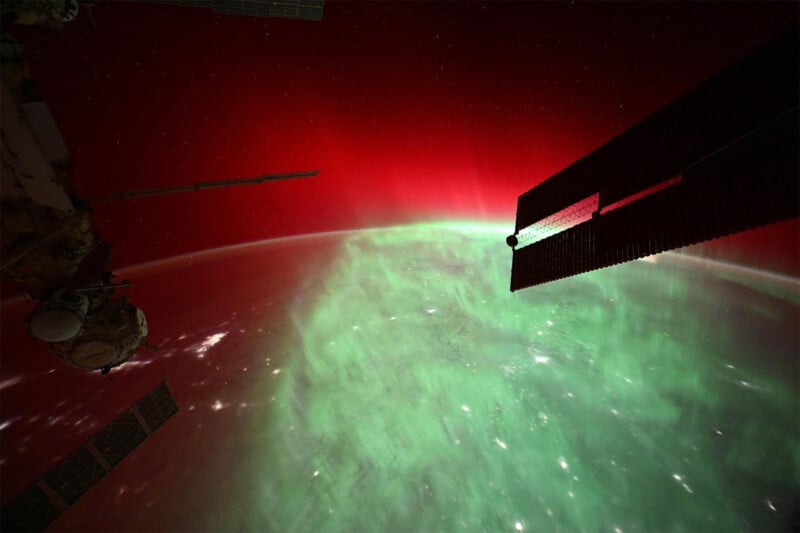NASA Astronaut Don Pettit Rings in the New Year with Amazing Aurora Photo Captured in Space

Veteran astronaut Don Pettit rang in the New Year aboard the International Space Station (ISS) by capturing an amazing photo of a brilliant aurora.
Pettit, 69, well-known for his orbital astrophotography, is NASA’s oldest active astronaut and returned to the ISS in September for his fourth orbital mission.
Pettit’s latest photo, shared on January 2nd, shows northern lights illuminating the night sky against a silhouette of the International Space Station. Earth was hit by a significant CME and powerful solar winds as the calendar ticked over to 2025, resulting in substantial auroral activity and a severe G4-class storm on January 1st.
The Sun emitted three strong solar flares on Dec. 29, peaking at 2:18am, 11:14pm, and 11:31pm ET. The National Oceanic and Atmospheric Administration’s Solar Ultraviolet Imager captured images of the events, which were classified as X1.1, X1.5, and X1.1. https://t.co/iAjDFBwLnt pic.twitter.com/VeX4jHJNn3
— NASA Sun & Space (@NASASun) December 30, 2024
Although not as severe, the National Oceanic and Atmospheric Administration (NOAA) is forecasting a G1-class storm on January 4th and 5th, which could result in northern lights being visible in northern areas within the United States. The January 1st storm didn’t align well with nighttime in North America but provided viewers with brilliant displays across Europe.
Since returning to the ISS in September, Pettit has been characteristically active with his camera. Among the most prolific and talented photographers to ever go to space, Pettit recently shared a side-by-side showing the fleeting nature of Sun glint on Earth, a video of Dragon cargo number 31 undocking from the ISS and returning to Earth, and a stunning photo of the Large Magellanic Cloud (LMC) that Pettit captured using a homemade tracker to compensate for the space station’s movement.
Solar water witching from orbit; where there is water there is sun glint. These two photos were taken seconds apart to capture the fleeting nature of sun glint. pic.twitter.com/u4UrKCTrc0
— Don Pettit (@astro_Pettit) December 29, 2024
Dragon cargo number 31 undocked yesterday and returned to planet Earth carrying the spoils from our research. pic.twitter.com/YdG6CgF8EU
— Don Pettit (@astro_Pettit) December 17, 2024
Large Magellanic Cloud visible in the southern hemisphere with the upper “red-orange” part of our atmosphere (called the f-region) seen in the lower part of the photograph. This is a time exposure using my homemade tracker that compensates for @space_station motion, thus allowing… pic.twitter.com/YcCwSqkIzV
— Don Pettit (@astro_Pettit) December 13, 2024
The LMC is about 200,000 light-years from Earth, and the ISS moves at 17,500 miles per hour, so Pettit’s fancy homemade tracking system has many challenges to overcome. So far, so good.
It’s not the first time Pettit has made a custom tracking system for use aboard the ISS. In 2002, during his first ISS mission, Pettit created a barn door tracker using “stuff laying around.” This device counteracted the ISS’ motion and enabled Pettit to shoot sharp images of cities at night from orbit.
“Before I made this barn door tracker on the station you would do a handheld picture of cities at night with maybe a one-second exposure and they’d always be blurry particularly if they were done with a telephoto lens,” Pettit explained to PetaPixel in a 2023 interview. “This was the first time it allowed anybody to get sharp images of cities at night.”
Pettit and fellow astronauts, Russian cosmonauts Alexey Ovchinin and Ivan Vagner, are expected to return to Earth this spring.
Image credits: Featured image by Don Pettit